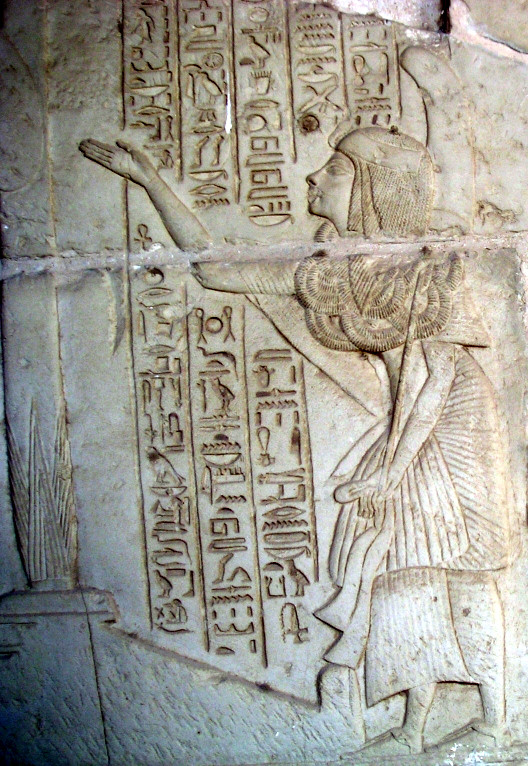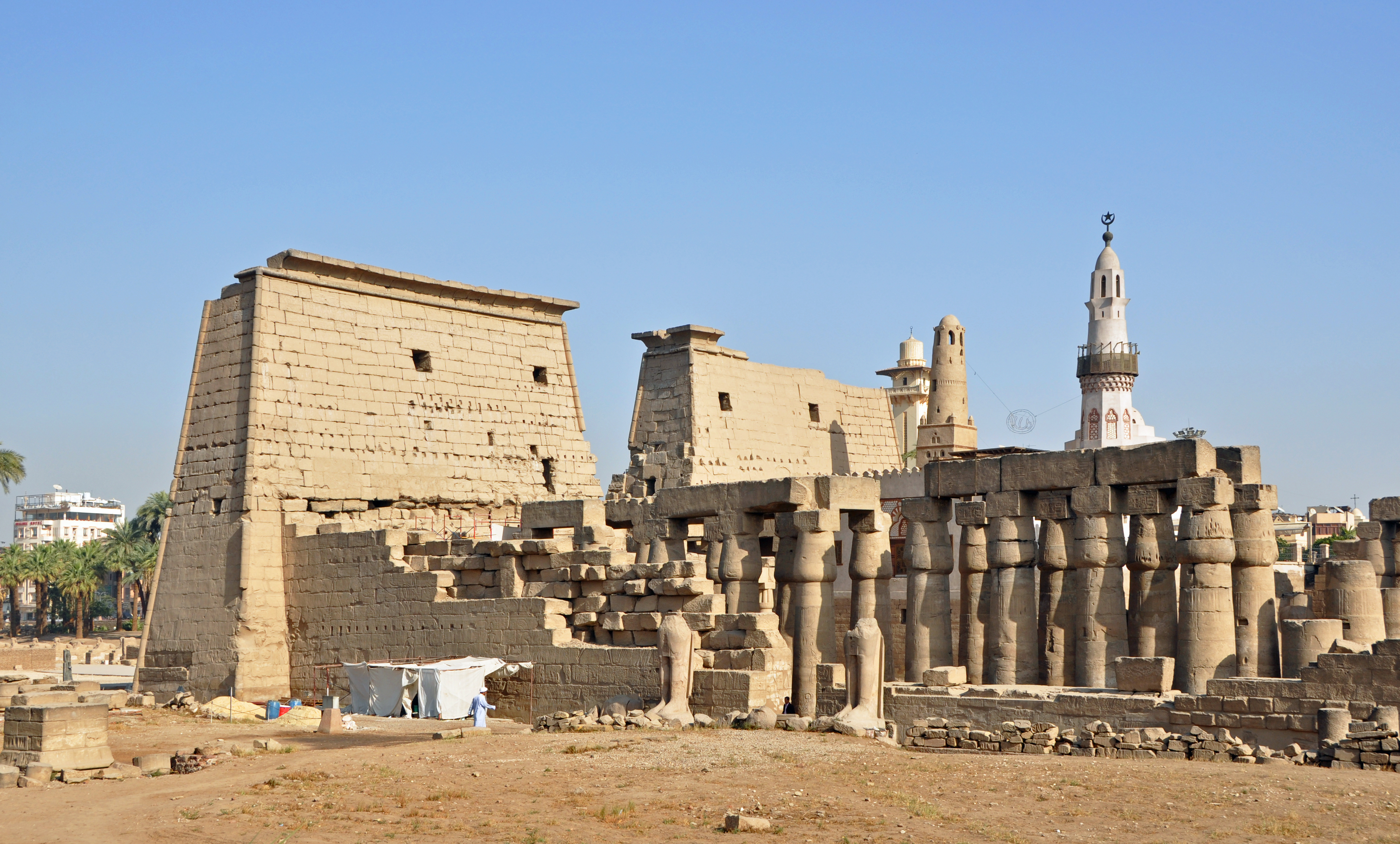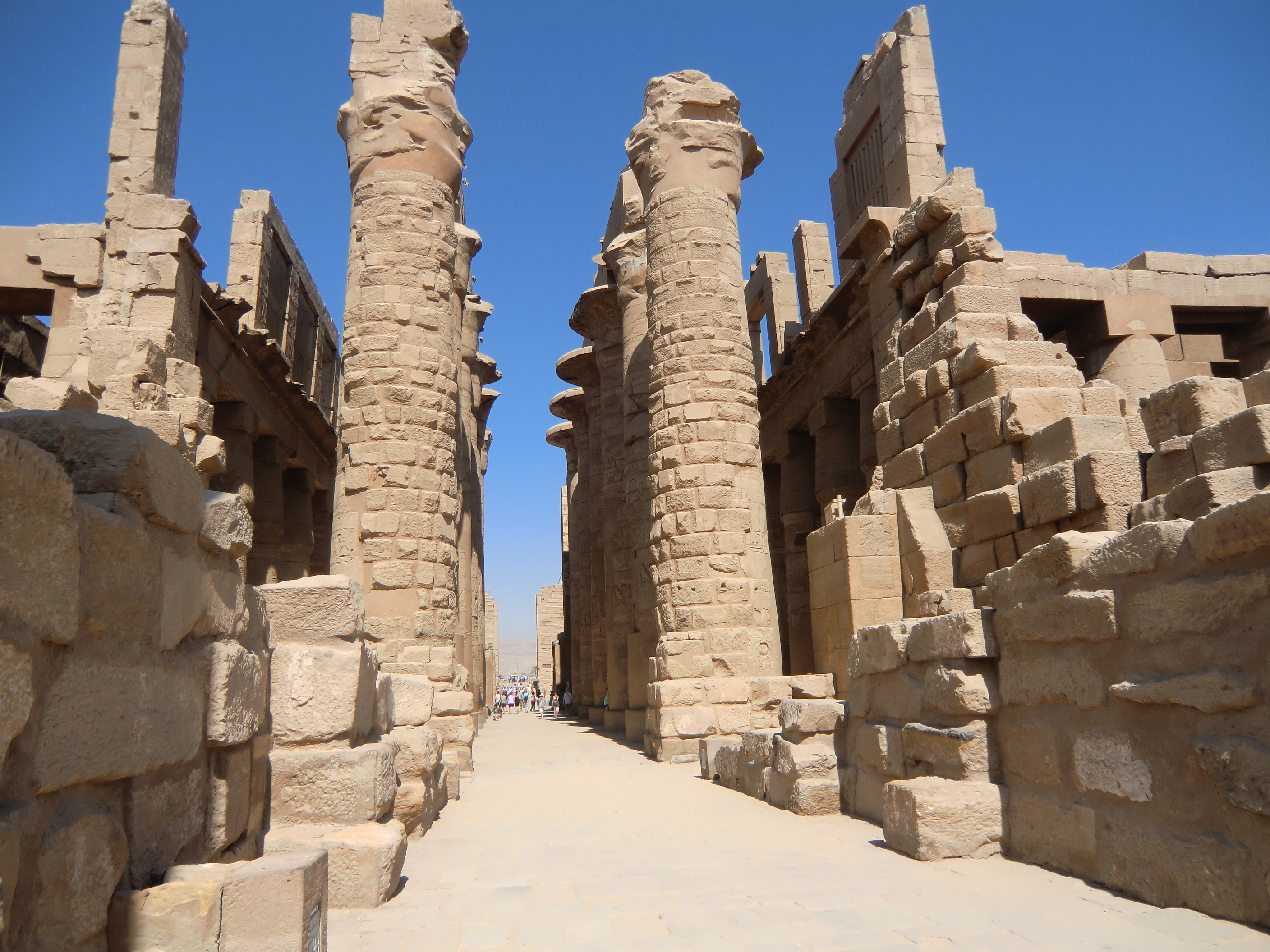|
Mutnedjmet
Mutnedjmet, also spelled Mutnedjemet, Mutnodjmet, Mutnodjemet ( egy, mw.t-nḏm.t) was an ancient Egyptian queen, the Great Royal Wife of Horemheb, the last ruler of the 18th Dynasty. The name, Mutnedjmet, translates as: ''The sweet Mut.'' Titles Mutnedjemet's titles include: Hereditary Princess ('' iryt-p`t''), Great King’s Wife (''hmt-niswt-wrt''), Great of Praises (''wrt-hzwt''), Lady of Grace (''nbt-im3t''), Sweet of Love (''bnrt-mrwt''), Mistress of Upper and Lower Egypt (''hnwt-Shm’w -mhw''), Songstress of Hathor (''hsyt-nt-hwt-hrw''), and Songstress of Amun (''Sm’yt-nt-imnw'') Mutnedjmet as Nefertiti's sister Some Egyptologists have speculated that Mutnedjemet is identical to Nefertiti's sister Mutbenret.J. Tyldesley, Chronicle of the Queens of Egypt, 2006, Thames & Hudson This identification was partially based on the fact that Mutbenret's name used to be read as Mutnedjmet. Other Egyptologist such as Geoffrey Martin note that there is no definite evidence to pr ... [...More Info...] [...Related Items...] OR: [Wikipedia] [Google] [Baidu] |
Horemheb
Horemheb, also spelled Horemhab or Haremhab ( egy, ḥr-m-ḥb, meaning "Horus is in Jubilation") was the last pharaoh of the Eighteenth dynasty of Egypt, 18th Dynasty of Egypt (1550–1295 BC). He ruled for at least 14 years between 1319 BC and 1292 BC. He had no relation to the preceding royal family other than by marriage to Mutnedjmet, who is thought (though disputed) to have been the daughter of his predecessor Ay (pharaoh), Ay; he is believed to have been of common birth. Before he became pharaoh, Horemheb was the commander in chief of the army under the reigns of Tutankhamun and Ay (pharaoh), Ay. After his accession to the throne, he reformed the Egyptian state and it was under his reign that official action against the preceding Amarna Period, Amarna rulers began. Due to this, he is considered the ruler who restabilized his country after the troublesome and divisive Amarna Period. Horemheb demolished monuments of Akhenaten, reusing the rubble in his own ... [...More Info...] [...Related Items...] OR: [Wikipedia] [Google] [Baidu] |
Mutbenret
Mutbenret (''Benretmut'') was an Egyptian noblewoman, and said to be the sister of the Great Royal Wife Nefertiti. Her name used to be read as Mutnedjemet. The hieroglyphs for ''nedjem'' and ''bener'' are similar and so is their meaning. The name is now thought to be Mutbenret however. One theory holds that Mutbenret was the same person as Mutnedjmet the wife of Horemheb, the last ruler of the Eighteenth Dynasty. But there is no conclusive evidence for this theory, and some challenge this theory. Mutbenret appears in several of the Tombs of the Nobles at Amarna: * In the tomb of Panehesy (tomb 6) the presence of two dwarfs on a lintel in a register associated with an offering scene indicate that Mutbenret was depicted nearby (probably in a register next to the royal princesses).Norman De Garis Davies The Egyptologists Nina M. Davies (6 January 1881 – 21 April 1965) and Norman de Garis Davies (1865–5 November 1941) were a married couple of illustrators and copyists wh ... [...More Info...] [...Related Items...] OR: [Wikipedia] [Google] [Baidu] |
Great Royal Wife
Great Royal Wife, or alternatively, Chief King's Wife ( Ancient Egyptian: ''ḥmt nswt wrt'', cop, Ⲟⲩⲏⲣ Ⲟⲩⲣϣ), is the title that was used to refer to the principal wife of the pharaoh of Ancient Egypt, who served many official functions. Description While most ancient Egyptians were monogamous, a male pharaoh would have had other, lesser wives and concubines in addition to the Great Royal Wife. This arrangement would allow the pharaoh to enter into diplomatic marriages with the daughters of allies, as was the custom of ancient kings. In the past the order of succession in Ancient Egypt was thought to pass through the royal women. This theory, referred to as the Heiress Theory, has been rejected regarding the Eighteenth Dynasty ever since a 1980s study of its royalty.O'Connor and Cline (Editors), Amenhotep III: Perspectives on his reign, pg 6 The throne likely passed to the eldest living son of those pharaohs. The mother of the heir to the throne was not alway ... [...More Info...] [...Related Items...] OR: [Wikipedia] [Google] [Baidu] |
Ay (pharaoh)
Ay was the penultimate pharaoh of ancient Egypt's Eighteenth Dynasty of Egypt, 18th Dynasty. He held the throne of Egypt for a brief four-year period in the late 14th century BC. Prior to his rule, he was a close advisor to two, and perhaps three, other pharaohs of the dynasty. It is theorized that he was the power behind the throne during Tutankhamun's reign. His ''Prenomen (Ancient Egypt), prenomen'' ''Kheperkheperure'' means "Everlasting are the Manifestations of Ra," while his ''nomen (Ancient Egypt), nomen'' ''Ay it-netjer'' reads as "Ay, Father of the God." Records and monuments that can be clearly attributed to Ay are rare, both because his reign was short and because his successor, Horemheb, instigated a campaign of ''damnatio memoriae'' against him and the other pharaohs associated with the unpopular Amarna Period. Origins and family Ay is believed to have been from Akhmim. During his short reign, he built a rock-cut chapel in Akhmim and dedicated it to the local deity ... [...More Info...] [...Related Items...] OR: [Wikipedia] [Google] [Baidu] |
Amenia, Wife Of Horemheb
file:Amenia wife of pharoah.JPG, Amenia Amenia was an Ancient Egypt, Egyptian noble lady, the first wife of Horemheb, the last ruler of the Eighteenth dynasty of Egypt, Eighteenth Dynasty.Dodson, Aidan and Hilton, Dyan. The Complete Royal Families of Ancient Egypt. Thames & Hudson. 2004, pg 154, Very little is known about her, and she seems to have died during the reign of Ay (pharaoh), Ay or early during the reign of Tutankhamun, before Horemheb ruled as pharaoh. Burial Amenia was buried in the Memphis, Egypt, Memphite tomb of Horemheb in the upper suite in shaft IV, alongside his second wife Mutnedjmet. Amenia was represented in the tomb in both inscriptions and statues. She was possibly depicted in a scene in the great courtyard of the tomb, and in a scene in the entrance to the main chapel. She was shown in statues with Horemheb found in two of the chapels of the tomb. Columns in the Second Courtyard show her name Amenia and show her to be a Chantress of Amun.Geoffrey T. Mart ... [...More Info...] [...Related Items...] OR: [Wikipedia] [Google] [Baidu] |
Tomb Of Horemheb In Saqqara
The Memphite Tomb of Horemheb is located in the Saqqara necropolis, near Memphis, Egypt. It was constructed before Horemheb ascended to the throne and was never used for his burial, since he later built the Theban tomb KV57 for this purpose. His two wives Mutnedjmet and Amenia were buried within the structure. The tomb was discovered by art robbers at the beginning of the 19th century. Looted reliefs were acquired by a number of European and American museums. The tomb's location was then lost, it was relocated in 1975 and excavated in 1979. The tomb was built in three phases, as Horemheb's status rose. The first design consisted of an entry pylon into forecourt, a colonnaded court containing the burial shaft and three chapels or offering rooms. Intrusive burials were found in the side chapels. The forecourt was then walled to produce two small chapels, one at each side. They were entered by two new piercings through the pylon. A new walled forecourt was constructed in front of ... [...More Info...] [...Related Items...] OR: [Wikipedia] [Google] [Baidu] |
Tomb Of Horemheb (Memphis)
The Memphis, Egypt, Memphite Tomb of Horemheb is located in the Saqqara necropolis, near Memphis, Egypt. It was constructed before Horemheb ascended to the throne and was never used for his burial, since he later built the Thebes, Egypt, Theban tomb KV57 for this purpose. His two wives Mutnedjmet and Amenia (wife of Horemheb), Amenia were buried within the structure. The tomb was discovered by art robbers at the beginning of the 19th century. Looted reliefs were acquired by a number of European and American museums. The tomb's location was then lost, it was relocated in 1975 and excavated in 1979. The tomb was built in three phases, as Horemheb's status rose. The first design consisted of an entry Pylon (architecture), pylon into forecourt, a colonnaded court containing the burial shaft and three chapels or offering rooms. Intrusive burials were found in the side chapels. The forecourt was then walled to produce two small chapels, one at each side. They were entered by two new pie ... [...More Info...] [...Related Items...] OR: [Wikipedia] [Google] [Baidu] |
Luxor
Luxor ( ar, الأقصر, al-ʾuqṣur, lit=the palaces) is a modern city in Upper (southern) Egypt which includes the site of the Ancient Egyptian city of ''Thebes''. Luxor has frequently been characterized as the "world's greatest open-air museum", as the ruins of the Egyptian temple complexes at Karnak and Luxor stand within the modern city. Immediately opposite, across the River Nile, lie the monuments, temples and tombs of the west bank Theban Necropolis, which includes the Valley of the Kings and Valley of the Queens. Thousands of tourists from all around the world arrive annually to visit Luxor's monuments, contributing greatly to the economy of the modern city. The population of Luxor is 422,407 (2021), with an area of approximately . It is the capital of Luxor Governorate. It is among the oldest inhabited cities in the world. Etymology The name ''Luxor'' ( ar, الأقصر, al-ʾuqṣur, lit=the palace, pronounced , , Upper Egyptian: ) derives from the Arabic ... [...More Info...] [...Related Items...] OR: [Wikipedia] [Google] [Baidu] |
Saqqara
Saqqara ( ar, سقارة, ), also spelled Sakkara or Saccara in English , is an Egyptian village in Giza Governorate, that contains ancient burial grounds of Egyptian royalty, serving as the necropolis for the ancient Egyptian capital, Memphis. Saqqara contains numerous pyramids, including the Step pyramid of Djoser, sometimes referred to as the Step Tomb, and a number of mastaba tombs. Located some south of modern-day Cairo, Saqqara covers an area of around . Saqqara contains the oldest complete stone building complex known in history, the Pyramid of Djoser, built during the Third Dynasty. Another sixteen Egyptian kings built pyramids at Saqqara, which are now in various states of preservation. High officials added private funeral monuments to this necropolis during the entire Pharaonic period. It remained an important complex for non-royal burials and cult ceremonies for more than 3,000 years, well into Ptolemaic and Roman times. North of the area known as Saqqara lie ... [...More Info...] [...Related Items...] OR: [Wikipedia] [Google] [Baidu] |
Karnak
The Karnak Temple Complex, commonly known as Karnak (, which was originally derived from ar, خورنق ''Khurnaq'' "fortified village"), comprises a vast mix of decayed temples, pylons, chapels, and other buildings near Luxor, Egypt. Construction at the complex began during the reign of Senusret I (reigned 1971–1926 BCE) in the Middle Kingdom (around 2000–1700 BCE) and continued into the Ptolemaic Kingdom (305–30 BCE), although most of the extant buildings date from the New Kingdom. The area around Karnak was the ancient Egyptian ''Ipet-isut'' ("The Most Selected of Places") and the main place of worship of the 18th Dynastic Theban Triad, with the god Amun as its head. It is part of the monumental city of Thebes, and in 1979 it was inscribed on the UNESCO World Heritage List along with the rest of the city. The Karnak complex gives its name to the nearby, and partly surrounded, modern village of El-Karnak, north of Luxor. Overview The complex is a vast open site an ... [...More Info...] [...Related Items...] OR: [Wikipedia] [Google] [Baidu] |
Nefertari
Nefertari, also known as Nefertari Meritmut, was an Egyptian queen and the first of the Great Royal Wife, Great Royal Wives (or principal wives) of Ramesses II, Ramesses the Great.Dodson, Aidan and Hilton, Dyan. ''The Complete Royal Families of Ancient Egypt''. Thames & Hudson. 2004. She is one of the best known Egyptian queens, among such women as Cleopatra VII, Cleopatra, Nefertiti, and Hatshepsut, and one of the most prominent not known or thought to have queen regnant, reigned in her own right. She was highly educated and able to both read and write hieroglyphs, a very rare skill at the time. She used these skills in her diplomatic work, corresponding with other prominent royals of the time. Her lavishly decorated tomb, QV66, is one of the largest and most spectacular in the Valley of the Queens. Ramesses also constructed a temple for her at Abu Simbel next to his colossal monument there. Translation of name There are different interpretations of the meaning of the name ... [...More Info...] [...Related Items...] OR: [Wikipedia] [Google] [Baidu] |
Ramesses II
Ramesses II ( egy, wikt:rꜥ-ms-sw, rꜥ-ms-sw ''Rīʿa-məsī-sū'', , meaning "Ra is the one who bore him"; ), commonly known as Ramesses the Great, was the third pharaoh of the Nineteenth Dynasty of Egypt. Along with Thutmose III he is often regarded as the greatest, most celebrated, and most powerful pharaoh of the New Kingdom of Egypt, New Kingdom, itself the most powerful period of Ancient Egypt. The name ''Ramesses'' is pronounced variously . Transliteration of Ancient Egyptian, Other spellings include Rameses and Ramses; in grc-koi, Ῥαμέσσης, Rhaméssēs. He is known as Ozymandias in Greek sources ( grc-koi, Ὀσυμανδύας, translit=Osymandýas), from the first part of Ramesses's regnal name, , "The Maat of Ra is powerful, Chosen of Ra". His successors and later Egyptians called him the "Great Ancestor". At age fourteen, he was appointed prince regent by his father, Seti I. Most Egyptologists today believe he assumed the throne on 31 May 1279 BC, bas ... [...More Info...] [...Related Items...] OR: [Wikipedia] [Google] [Baidu] |







